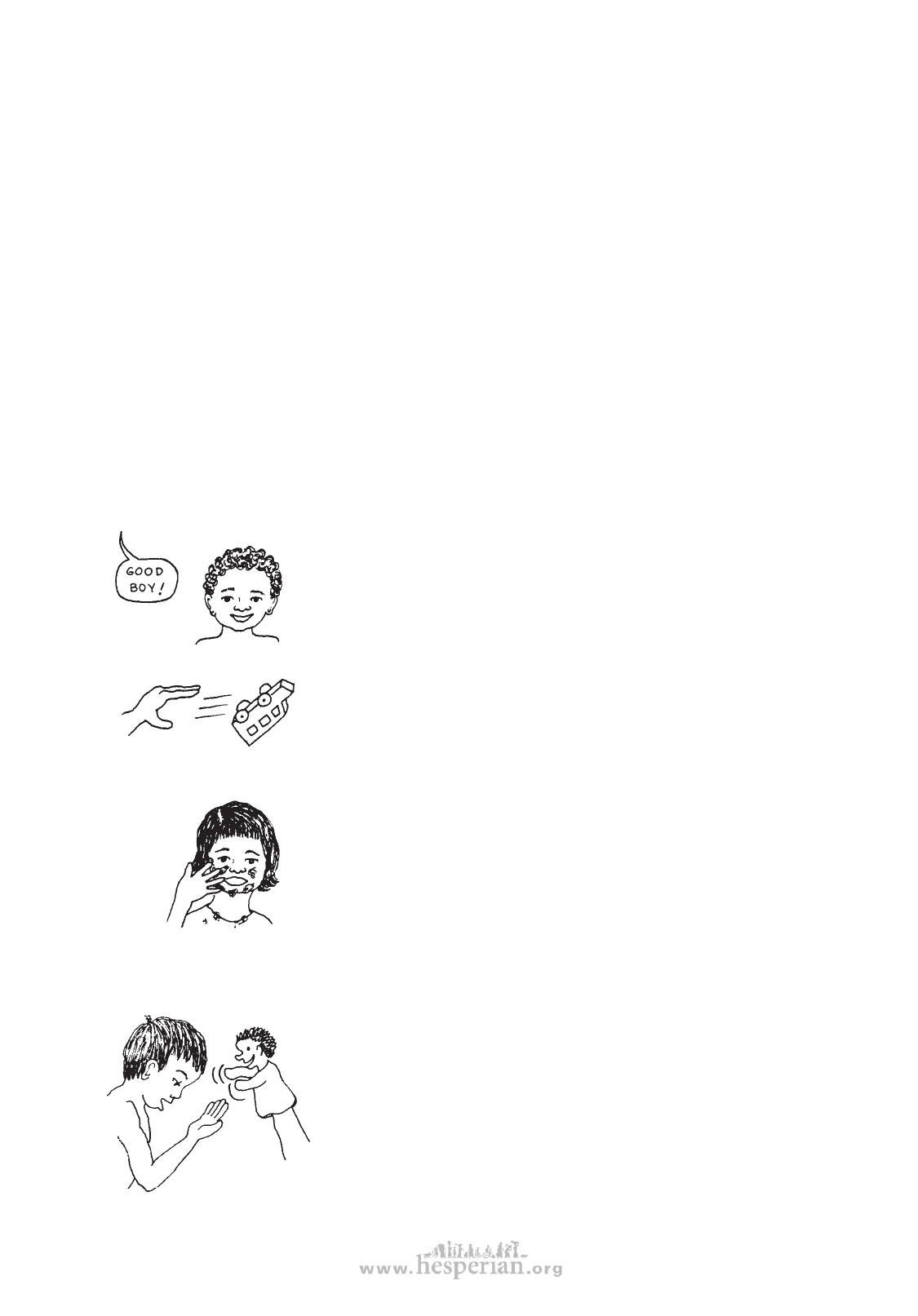
358 chapter 40
A BEHAVIORAL APPROACH TO CHILD DEVELOPMENT AND
LEARNING NEW SKILLS
In this chapter we have talked mainly about correcting ‘bad’ behavior. However, the
behavioral approach can also be used to help children learn basic skills for their continuing
development. The approach is often useful for children who are slow to develop—for either
mental or physical reasons.
In Chapter 34 on child development, we introduced the key features of a behavioral
approach: (1) make messages clear, (2) consistently reward things learned, and (3)
advance toward new skills through small steps. You will also recognize this behavioral
approach in the chapters on ‘feeding’, ‘dressing’, and ‘toilet training’. Here we would
like to review ways of applying a behavioral approach to a child’s basic development
and learning.
Looking at the whole child to decide where to begin
In considering how to help a child’s development, start by looking at what the child can and
cannot do. In terms of behavior, we can group our observations into 4 sections:
• Positive behaviors: Skills and characteristics the child
now has—particularly those that may help him in learning
something new. (For example, he enjoys being praised.)
• Negative behaviors: Things he does that are dangerous,
disturbing, or prevent his progress. (For example, breaking
things, hitting people, screaming when bathed, throwing
toys rather than playing with them.)
• In-between behaviors: These have both positive and
negative aspects, and need to be worked with to make
them more positive. (For example, for a child who is
beginning to feed herself, but who smears food all over:
we encourage feeding herself (which is positive), but not
smearing (which is negative). Even screaming or crying in
order to express a need might be considered positive for
a child who has great trouble communicating. We need to
help this become more satisfactory communication.)
• Key needs: These are problems in the child’s behavior
that need to be solved to make progress with learning.
They differ depending on the stage of development. (For
example, for a child to learn from his mother, he needs to
respond to his own name, to look at her when she speaks
to him, and to stay still and give attention for at least a
few seconds. These ‘key needs’ suggest the first steps in
learning to speak, play, or develop new skills.)
Disabled village Children